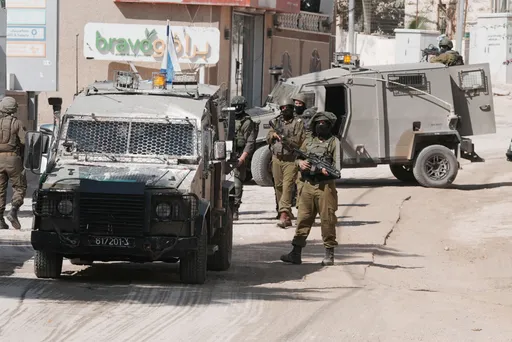In recent days, the focus of security experts has shifted to the nuclear power plant in the Russian city of Kursk that is fending off against a Ukrainian incursion.
The head of the UN nuclear watchdog has expressed concern about the danger of damage to the nuclear reactors amid the ongoing fight. Russia blames Ukraine for intentionally trying to strike the power plant with drones.
However, analysts say that the Ukrainian army's activity around the Kursk nuclear power station is more a strategic move than an immediate threat as Kiev tries to pressure Russia into ceasefire negotiations.
It's a "bluff" similar to previous Russian manoeuvres at the Zaporizhzhia plant, which came under Russian control in the wake of its full-scale war, says Dr Jakub Korejba, a research fellow at the Ankara-based AVIM Center for Eurasian Studies.
It is part of a broader effort by both sides to use nuclear threats as propaganda tools to stimulate peace talks and influence international and domestic opinions.
"This is more of a propagandist media informational activity than a military one. Ukraine is sending a signal to Russia, saying, 'If you don't agree to stop attacking us, we can do whatever, including a nuclear catastrophe.' But that's all bluff."
Alexey Likhachev, the head of the Russian State Atomic Energy Corporation (Rosatom), said in an interview on Tuesday that the safety risks associated with the Kursk Nuclear Power Plant are "very high".
“I still assess the risks as very high," he said.
Likhachev mentioned that two of the plant’s reactors have been decommissioned, a fourth is currently undergoing scheduled maintenance, and the third unit remains fully operational.
Last month, Russia said Ukraine launched a drone attack on the Kursk Nuclear Power Plant, but it was shot down near a spent nuclear fuel storage facility.
Ukrainian authorities have not commented on Moscow’s claims, and independent verification is difficult due to the ongoing war.
On Monday, a Russian drone and missile attack forced Ukraine to disconnect several nuclear power units from the grid, posing a risk to the nuclear power sector, a Ukrainian mission to the International Atomic Energy Agency (IAEA) said.
The IAEA has urged both sides to refrain from fighting around nuclear plants to avoid a catastrophic incident. IAEA chief Rafael Grossi said after visiting Russia's Kursk nuclear power plant on August 24that there was a risk of a nuclear accident there.
"I think that the risk of nuclear catastrophe is overestimated," Jakub Korejba said.
"Ukraine is trying to force the West to force Russia to start talks on Ukrainian terms by launching this virtual bluffy nuclear threat and Russia is trying to force the West so that they force Ukraine to start talks at Russian terms."
The Kursk Nuclear Power Plant, located in the border region with the same name, where Ukraine launched an operation on August 6, is one of Russia’s largest nuclear power plants and is vital to the country’s energy infrastructure, providing electricity to 19 regions within the Central Federal District.
"Soviet nuclear power plants are designed in a way to be able to survive, even tactical nuclear attacks," Korejba tells TRT World.
"Those are millions of tonnes of concrete. And those power plants were built in a way to survive not only conventional attacks but also a nuclear attack, so the risk of any disintegration is minimal."
























